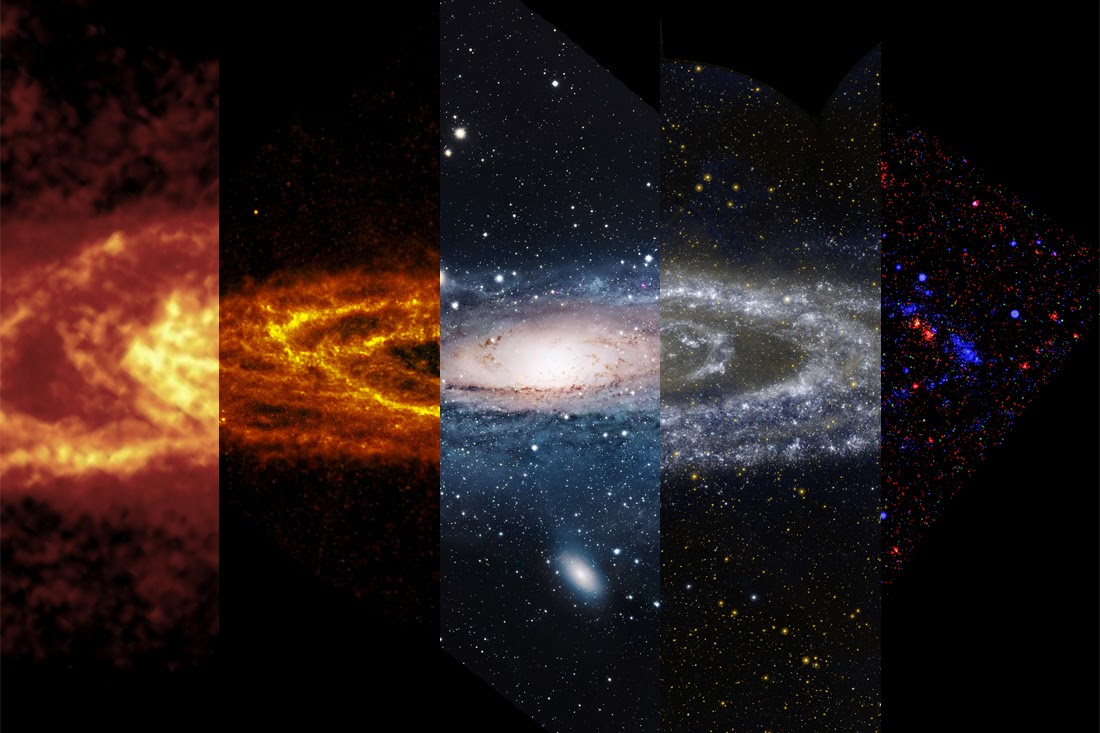
Two years ago, the Russian satellite “Spektr-R”, the basis of the astrophysical project “RadioAstron”, was completed in space. Now it has been replaced by the Spektr-RG space telescope, and two more observatories, Spektr-UF and Millimetron, are under development. Let's see why Roscosmos and the Russian Academy of Sciences are creating these telescopes, and how their implementation is progressing.
Let's start from afar to understand why ordinary telescopes on Earth are not enough for astronomers.
▍What is multispectral astronomy?
As in antiquity, today for a person the main method of obtaining knowledge about the surrounding Universe is the observation of oscillations of the electromagnetic field or electromagnetic radiation. At first, a person simply studied the surrounding space with a unique natural means - with his eyes. But our eyes see a very narrow range of wavelengths of electromagnetic waves, in the range in which our Sun radiates the brightest, and the Earth's atmosphere transmits best - visible.

Science has made it possible for people to look around them in other ranges as well. Depending on the wavelength, we call electromagnetic oscillations differently. Long waves - from kilometers to centimeters - are "radio". For example, an FM radio wave is about 3 meters long, a cellular connection is 16 cm, a microwave oven is 12 cm, and an experimental 5G network in Skolkovo is 6 cm.
If the wavelength is shortened by less than a centimeter, and is millimeters or their fractions, this is already a millimeter range of radiation. It is such a transitional state between radio and light. If we shorten the waves further, we will get infrared "thermal" radiation, then visible light, then ultraviolet, X-rays and the hardest and most energetic radiation - gamma. All this is called the "spectrum of electromagnetic radiation". Probably everyone in physics classrooms had the following graphs:
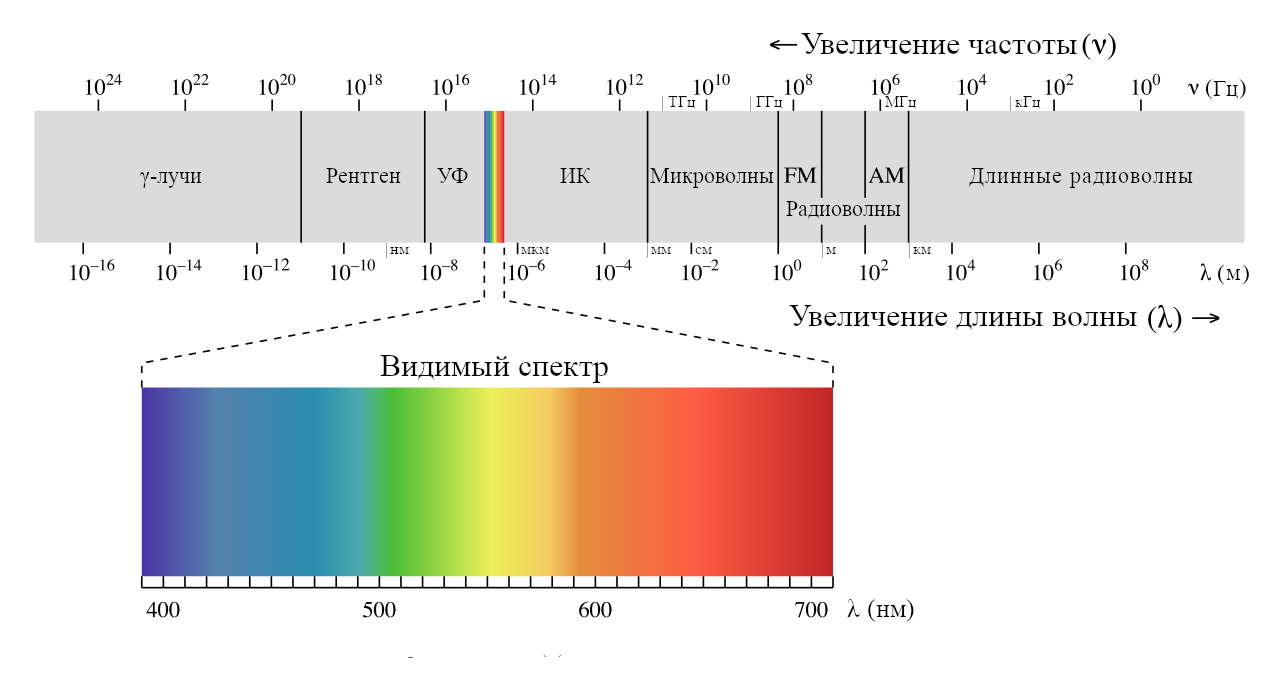
They clearly show how little of the real information about this world is perceived by our eyes - only seven colors, which we see as a rainbow. Everything else, even without science, is in darkness.
Electromagnetic waves are created in the processes associated with the release and transfer of energy, and from distant space, only that which was thrown out by some large-scale events reaches the Earth: supernova explosions, accretion disks of black holes, the effect of cosmic radiation on gas and dust ... And each event corresponds to its spectral signature. The radiation of a star depends on its temperature and composition, for example, the Sun has a peak brightness in the range of visible light, and in the gamma range it is almost "black". Young stars are blue, old stars are red. Distant quasars shine in almost the entire spectrum.
What we perceive with our eyes as colors is simply electromagnetic vibrations of different wavelengths, for example, the wavelength of red light is 650 nanometers, and blue is 450 nanometers. By the same principle, scientists create color pictures from images in those ranges of radiation in which our eyes cannot see at all, for example, in infrared or ultraviolet radiation, or even X-rays.

radiation that reaches the Earth does not always directly coincide with the one that left the source. The difference depends on the speed of the source relative to the receiver, the distance and the properties of the medium between them. And only taking into account the whole complex of factors makes it possible to extract a huge amount of data on near and distant space: to study the structure, movement and evolution of stars, to find exoplanetsand black holes, observe processes in galactic nuclei, measure distances on galactic and galactic scales, study the properties of intergalactic and interstellar space, look into the past of galaxies for billions of years ... Ultimately, it is better to understand the Universe in which we live. That is why we need multispectral "eyes". (I highly recommend the book on this topic "Multichannel Astronomy" ).
▍Why launch telescopes into space?
In interstellar space, electromagnetic waves survive the effects of gravitational waves, interstellar plasma, gas and dust, but the biggest obstacle to Earth is our atmosphere. Its density is comparable to ten meters of water, so we are not afraid of cosmic radiation, but astronomers are interested in it. Even if you look at the stars from Earth through a small telescope, you can see the scattering effect of air, and for some electromagnetic waves (hard UV, X-ray, gamma) the air is generally opaque.
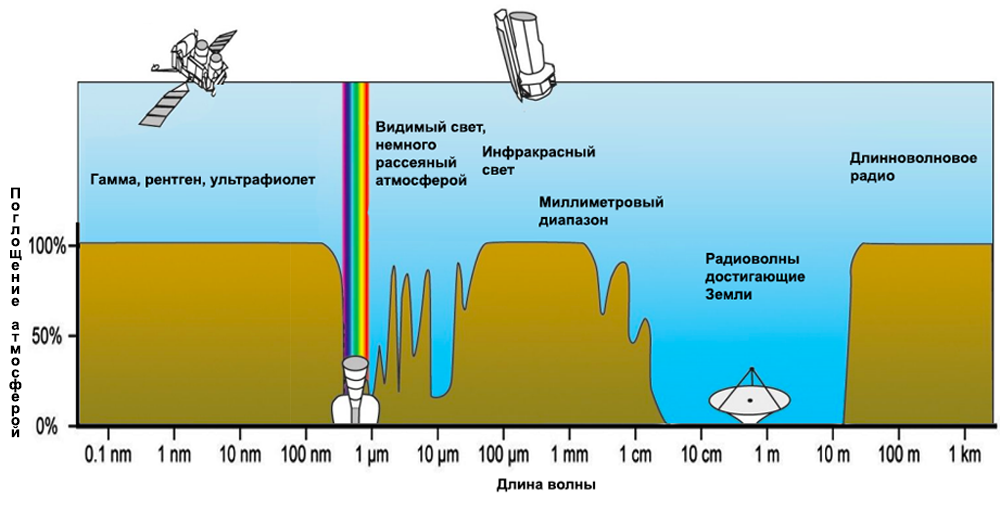
To reduce the impact of the atmosphere, astronomers try to climb the mountains as high as possible in order to reduce the air layer. In addition, you have to hide from civilization, which raises dust, shines in the sky with searchlights, makes noise in the radio range, and now it still covers the sky with hundreds of man-made "stars" - satellites.
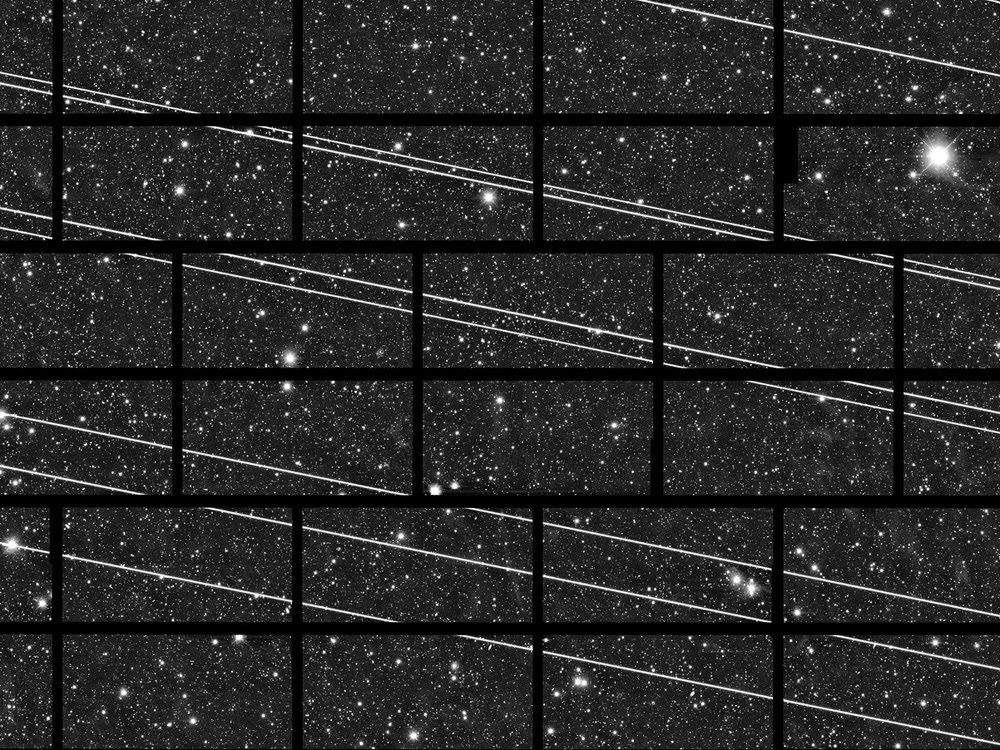
Therefore, only astronautics provides the best environment for studying the properties of the observable Universe - space in all available ranges.
▍ "Spectra"
Scientists of the Soviet Union in the 80s of the last century planned a large-scale astrophysical program "Spectrum", which involved the launch of a whole series of heavy space telescopes. The observation was planned in radio, millimeter, infrared, ultraviolet, X-ray and gamma ranges. Accordingly, the telescopes received letters: R, M, IR, UV, RG. Unfortunately, the priorities of Soviet cosmonautics in the 1980s were a race with America: Mir, Energia-Buran stations, an insane number of spy satellites ... The USSR launched two rockets a week, but not for science. Only a couple of telescopes were launched in the 1980s: Astron and Garnet, but Spectra remained only in the dreams of our astronomers.
Then the Soviet Union collapsed, the "dashing nineties" came, in which everyone reckoned as best he could. For example, specialists from the Astrophysical Center of the Lebedev Physical Institute assembled a prototype of the KRT-10 telescope in Pushchino, and began ground tests.
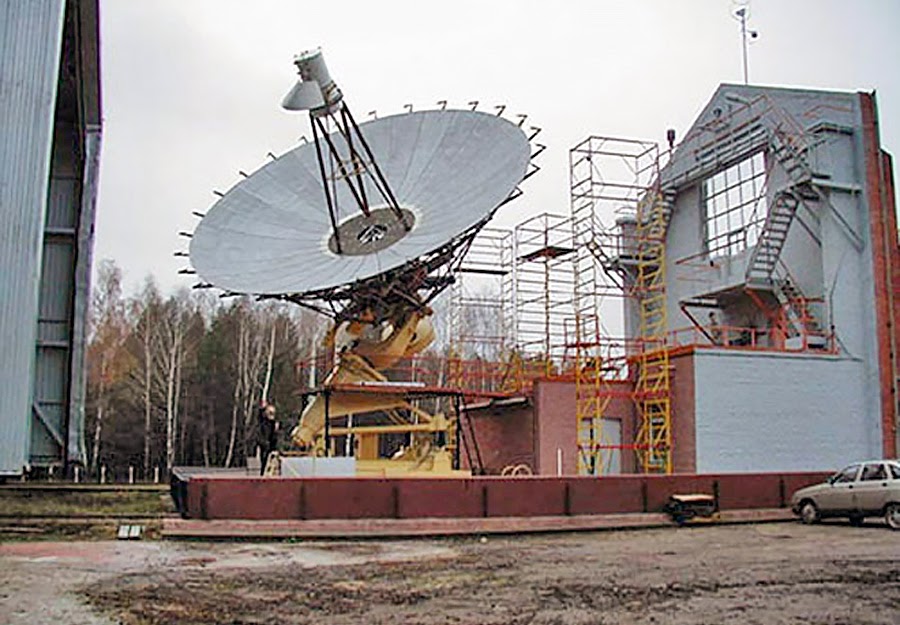
Technically, it was RT-10, since "K" means "space", and the ground-based prototype did not fly into space. But the work was rewarded. Astrophysicists, physicists and engineers managed to create and launch in 2011 the first of the "Spectra" - "R", ie. "radio".
Its launch opened the international program of research by the method of radio interferometry with a very long baseline - " RadioAstron" . The main advantage of this method is the ability to observe the brightest radio sources in the visible Universe with an unprecedented angular resolution. Seven and a half years of research have yielded results in studies of quasars, pulsars, the interstellar and intergalactic medium.

In my opinion, the main uniqueness of RadioAstron was that it basically flew despite the circumstances in which it was created in the 90s and 2000s. The most important role in this achievement was played by Nikolai Kardashev , who in the 50s was a co-author of the work that theoretically substantiated the creation of giant radio telescopes-interferometers, and in the last decades of his life put all his authority into the launch of RadioAstron. The VLBI technology developed with the participation of Kardashev has significantly expanded the capabilities of radio telescopes by combining them into interferometer arrays. Now many antennas could work as one big one.
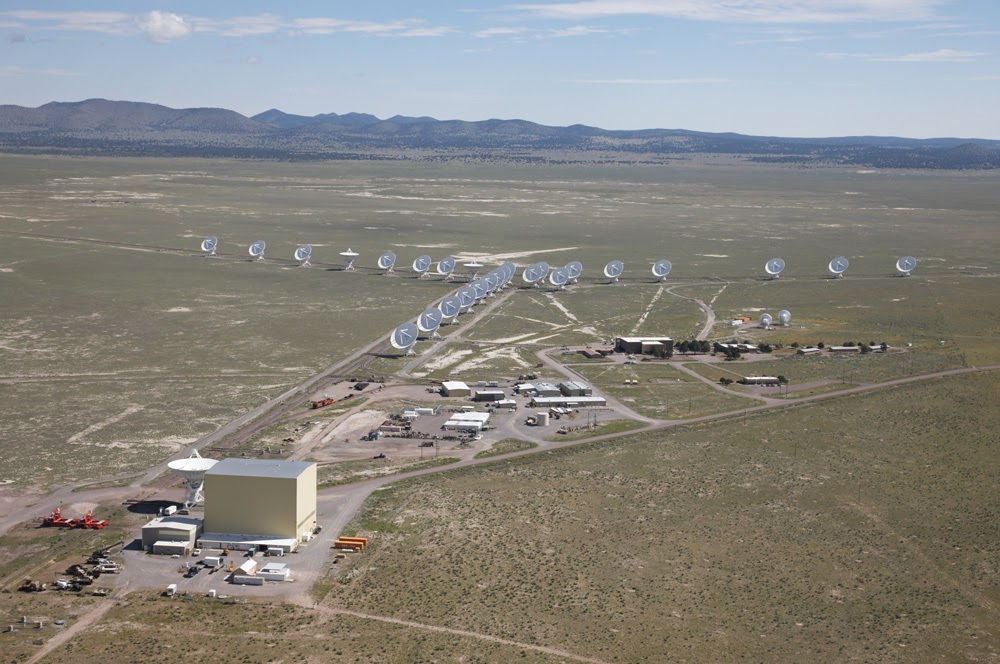
Moreover, they can be combined not only directly, but also remotely, i.e. to create radio telescopes-interferometers with a diameter of 12 thousand kilometers. This is not a typo, everything is correct: a radio telescope with a size of 12 thousand km. VLBI allows you to combine antennas located all over the Earth, which means that only its diameter is the limit.
The space "RadioAstron" made it possible to increase the size of the radio interferometer to 340 thousand km, and Kardashev witnessed its successful operation. Later, the same technology, already applied by European and American scientists, gave a "photograph of the shadow of a black hole."
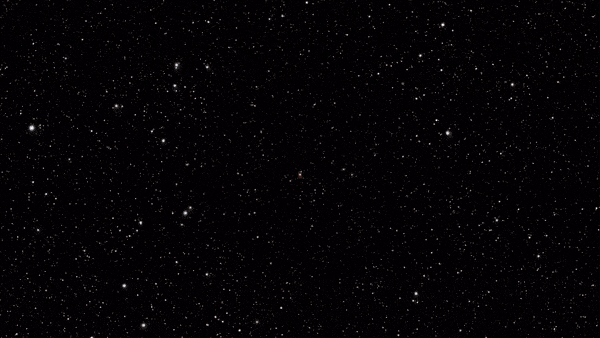
Other "Spektras" also moved forward, for example, a 1.7-meter mirror for an ultraviolet telescope has already been manufactured at the Lytkarinsky optical glass plant, and its gigantic tube, the size of a bus, has been waiting in the wings for several years at NPO im. S.A. Lavochkin. True, there were problems with financing and sanctions electronics, but, it seems, they could be solved .
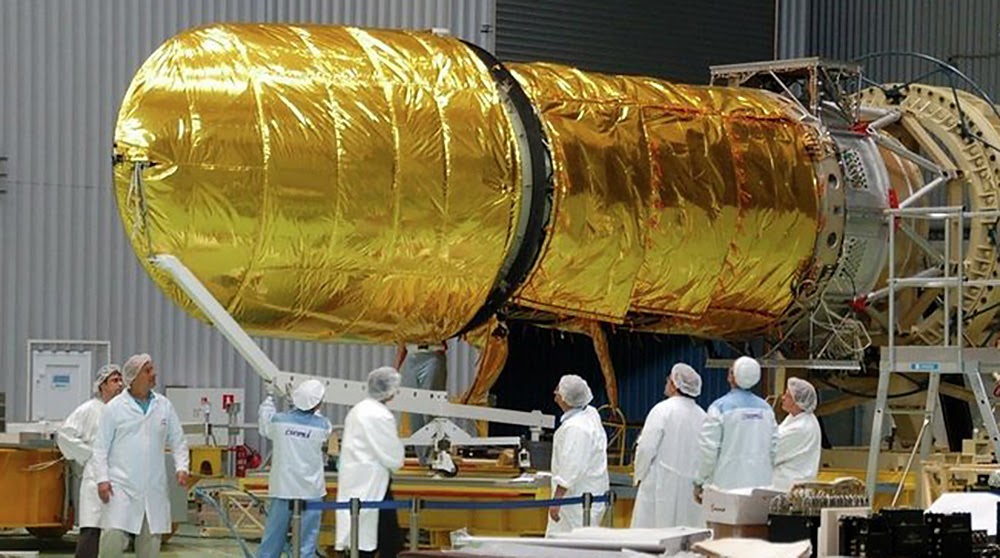
X-ray "Spectrum-RG" , after numerous delays and problems, flew in 2019 and now pleases world science. This is also a telescope with a difficult fate , which requires a separate story. Difficulties in its creation led to the loss of "G" from its scientific program, ie. he observes only in X-rays, and is not intended for the gamma range, but they decided not to change the name so that the second "Spectr-R" would not turn out.
Unlike RadioAstron, an X-ray telescope does not observe individual radiation sources, but maps the entire visible sky.

Spectr-RG is also an international project, but if RadioAstron's foreign participation consisted of ground support, then two telescopes are observing in X-ray: a Russian and a German one. For every six months of Spectra-RG operation, a complete map of the sky is compiled, and the longer observations are made, the more "penetration" the telescopes will achieve and the more X-ray sources will be mapped.
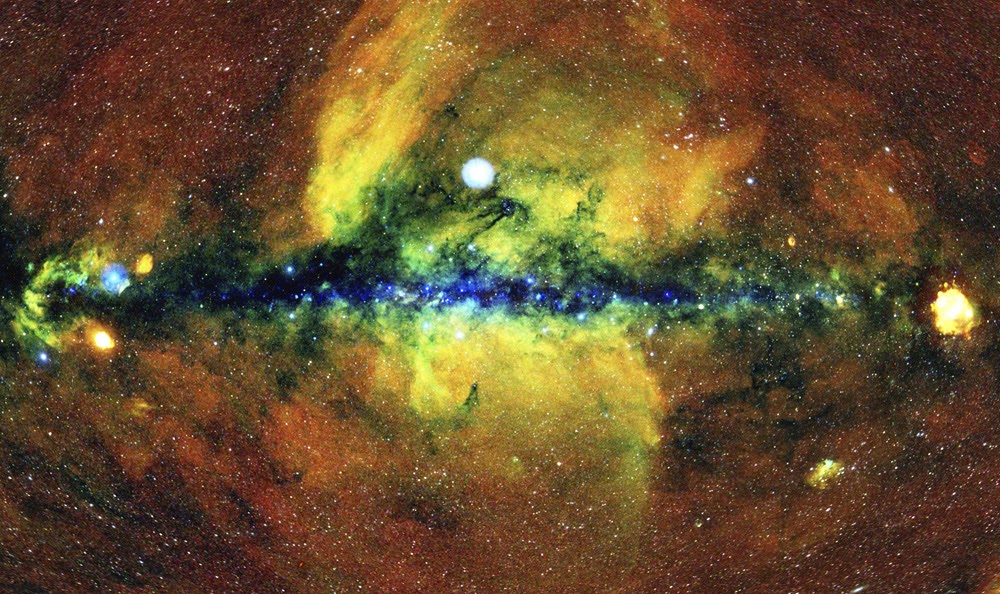
We will definitely talk about Spectr-RG separately. It remains for us to mention the most difficult and most "long" "Spectrum" - "Millimetron". Its development today is occupied by the creators of "RadiAstron", who are helped by the experience gained in the previous project.

The millimeter range is no less important for studying space, as clouds of interstellar dust and other cold objects glow in it. The convenience of the millimeter wavelength range also lies in the fact that it can observe through the telescope both independently and using VLBI technology. So far, observations in the millimeter range are carried out from the Earth from high mountain regions, for example, in the Chilean Andes, an array of ALMA millimeter telescopes is located.

If we launch Millimetron, then together with ALMA it will be able to increase the detail of observations by orders of magnitude. With him or separately, you can much more accurately examine the vicinity of black holes and determine if there are any "wormholes" among them; measure spectral distortions of the relic radiation and look into the past of the Universe previously inaccessible to observation; determine the content of complex organic molecules in neighboring stellar systems, and even try to find Dyson spheres, i.e. more advanced and ancient alien civilizations ... Each of these areas is a separate breakthrough in knowledge about the properties of the Universe, and Europeans, Koreans and Chinese are already ready to participate in the research, despite the rather early stage of the project's readiness. Our next story will be about how "Millimetron" is being created today.

